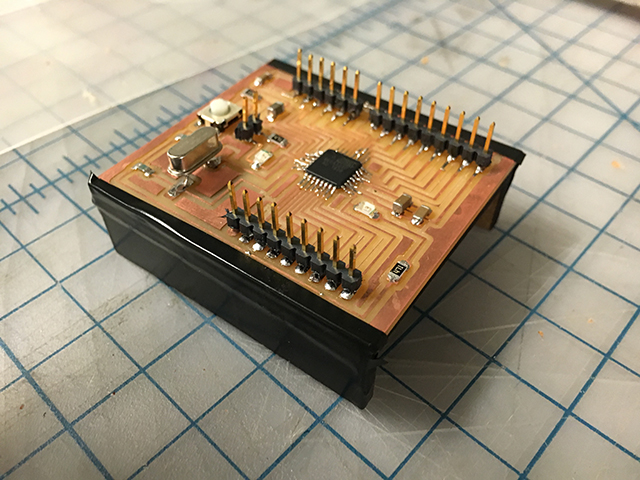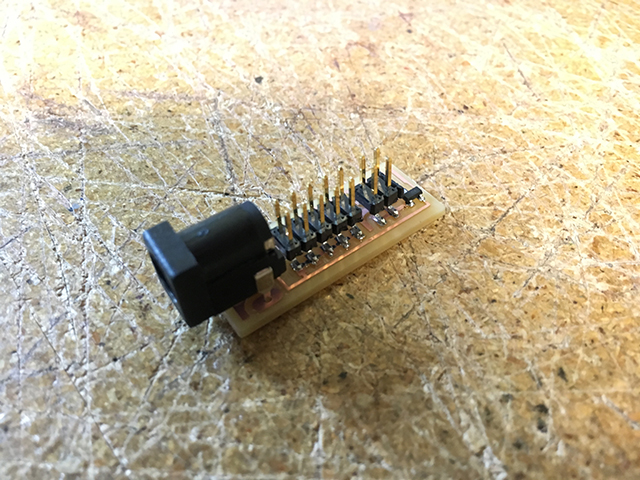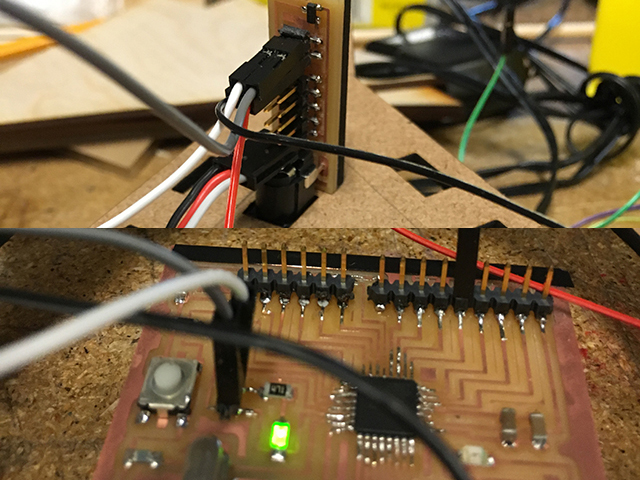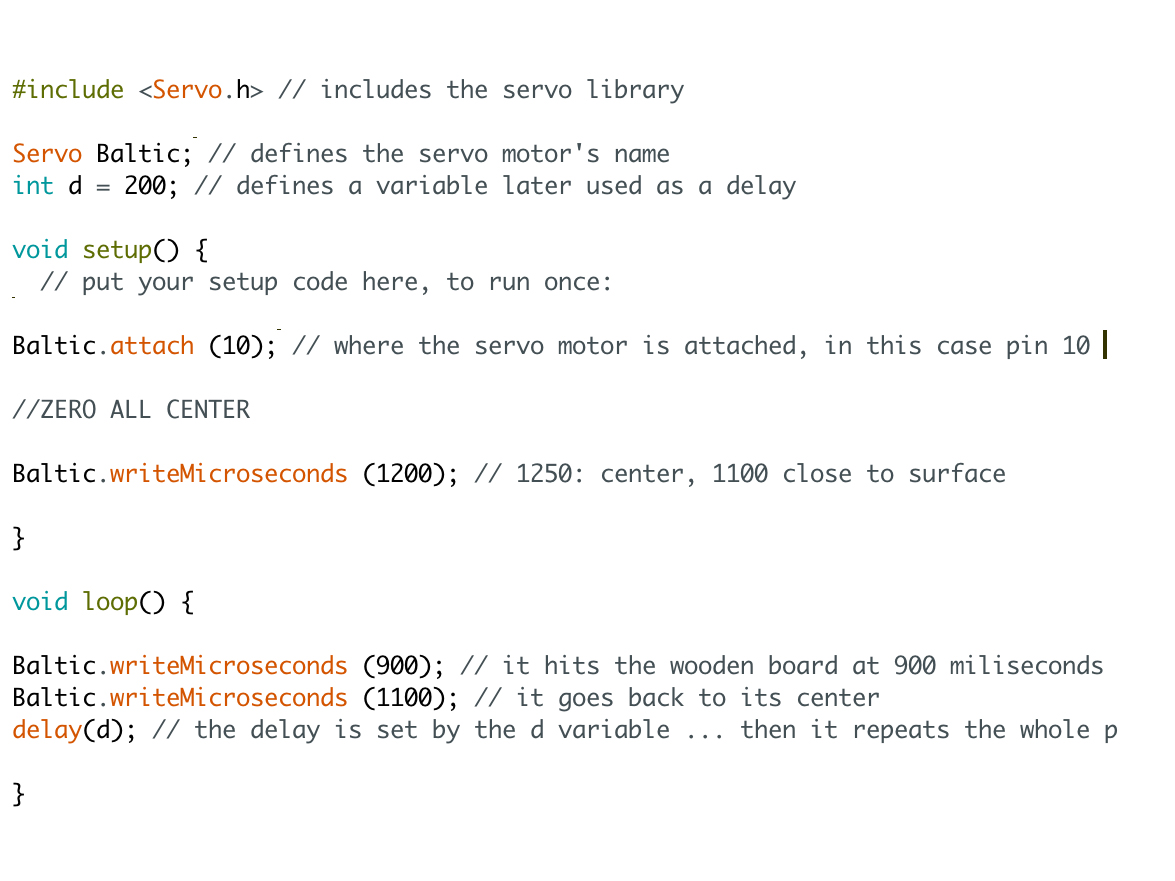Introduction
During week 13 we learnt about output devices. I was very interested in knowing how to use a Servo motor, although in the future I will also want to know how to deal with solenoids and stepper motors for my projects.
Introduction 2nd paragraph.
Assignment
I made a case for a servo motor so that it could be held up with a structure and an adaptor so that a stick could be moved with it. The documentation for that is under my final project's documentation. The idea for the servo is to have it hit a surface that produces sound, making it work as a drum machine. The electronics are attached to a SatshaKit board that I made, that behaves like an Arduino.
This is a small video of how the system works.
This is the SatshaKit board that I made. It was very difficult to solder the microchip and other components but once you make it work, it's very fulfilling. The black base is only there because I needed to adapt its shape to something I could stick on another surface.

The SatshaKit board doesn't have a direct power plug or USB header, so I made a mini power board with two 5V slots that are controlled by a regulator and 4 other slots that are linked directly to the 6V 1A power source connecte to the barrel socket.

I set up the two boards and the servo motor to connect themselves, power and ground to the little power board and then the servo to pin 10.

In the programming part I included the Servo library in the Arduino code and named it Baltic (the name of the material it was hitting). I also defined a variable d that would define the delay or the wait between hits. With the Servo library on you can control the motor in a simple way with the writeMicroseconds function, I did something very simple so that it could hit the board and come back and repeat itself until I'd disconnect it. It worked!

Working with servo motors have been fun and also very easy, I imagine that with a little more patience and time I can achieve many things, and also now I can imagine myself working with solenoids and other motors without a problem. To reduce the speed of a servo, something I don't need right now, but something I could need later on, I could use gears or also another library that can tweak the speed of the motor. Check the links!
Files
File 1: Powerboard schematic / board / interior / traces.
File 2: Arduino file here.